Haggadah (Amsterdam)
Joseph Leipnik
1740
Image

Engage with this Source
Creator Bio
Joseph Leipnik
18th Century
The scribe and illustrator Joseph ben David came from Leipnik, in northeastern Moravia (now the Czech Republic) and lived in Frankfurt am Main, Darmstadt, Altona, and Hamburg. In the eighteenth century, Hebrew manuscript illustration experienced a revival in Germany and Central Europe. While he was neither the most prolific nor the most skilled artist of his time, Leipnik became a famous and influential scribe and illuminator, introducing new themes and using color in innovative ways. Fifteen of his manuscripts (one illustrated by another artist) have survived, dated between 1730 and 1740, among them fourteen Haggadahs. Some information about his life, including his patrons, can be gleaned from the colophons he added to his manuscripts. He probably supplemented his income by teaching children of rich families.
Related Guide
Early Modern Visual and Material Culture
1500–1750
Early modern Jewish visual culture flourished, with illuminated manuscripts, ornate synagogues, and portraiture alongside increasing non-Jewish interest in Jewish customs and greater Jewish self-representation.
You may also like
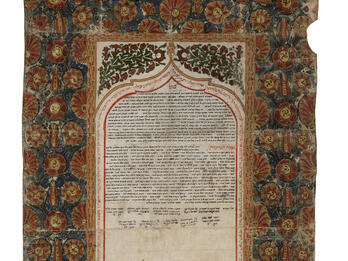
Karaite Ketubah (Crimea)
While ketubot (marriage contracts) are usually written in Aramaic, Karaite ketubot are written in Hebrew. They are often pentagonal in shape, most often with a pointed bottom. This example has a…
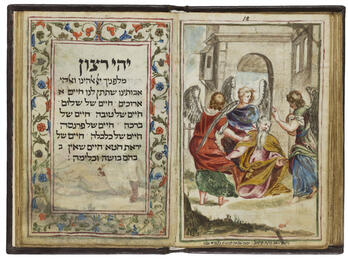
Harrison Miscellany
The Harrison Miscellany is an early eighteenth-century codex of sixty leaves featuring delicate gouache illustrations and Hebrew texts. Each illustration (likely executed by a Venetian, non-Jewish…
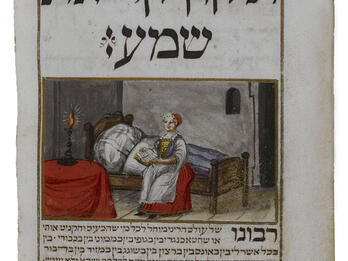
The Order of Grace after Meals
This page from a birkon (Grace after Meals) is an example of the work of Aaron Wolf Herlingen (Aaron Schreiber), a prominent eighteenth-century scribe and artist known for his illustrated Grace after…
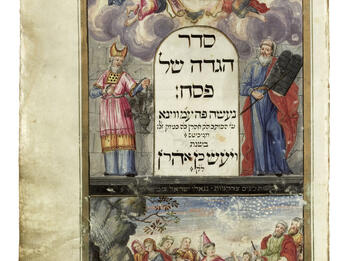
Haggadah (Vienna)
The frontispiece of this Haggadah shows the biblical Aaron on the left, carrying the Temple incense, and Moses on the right, holding the tablets of the Law. The scene at the bottom of the page shows a…
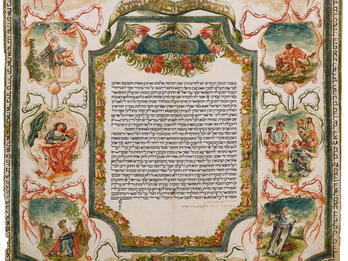
Ketubah (Rome)
This intricately decorated ketubah (marriage contract) marks the marriage of Gabriel ben Hezekiah Amron to Simḥa bat Shabbetai mi-Segni. It is richly decorated with biblical miniatures, including one…

The Order of Circumcision Prayers
This decorated manuscript of the prayers for a circumcision ceremony was owned by one Joseph ben Samuel. On its title page (not shown) is an unidentified coat of arms decorated with the Order of the…

